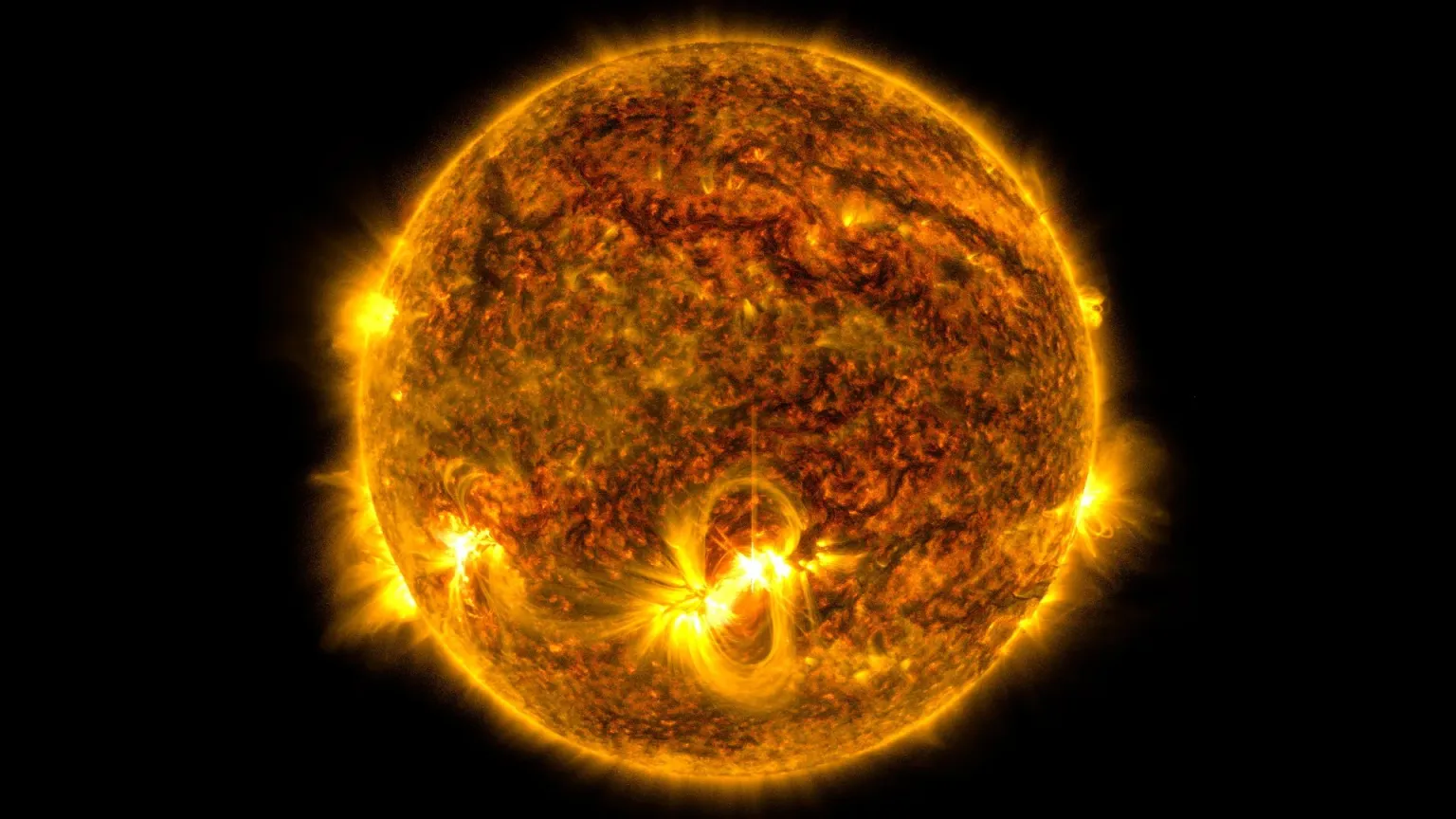Introduction to Exoplanetary Discoveries and Significance of OGLE-2018-BLG-0567L
The Universe, in its vast magnitude and complexity, offers an endless array of celestial phenomena that challenge and expand our understanding of cosmic formations and dynamics. Among these, the discovery of exoplanets—planets orbiting stars beyond our solar system—has reshaped modern astronomy and astrophysics. This pursuit is not merely about cataloging distant worlds but about unraveling the processes that govern planetary formation, evolution, and potential habitability within diverse galactic environments.
The identification of gaseous giants in remote star systems plays a crucial role in piecing together this cosmic puzzle. Notably, the recent discovery of OGLE-2018-BLG-0567L, a gas giant identified via the gravitational microlensing technique, exemplifies how advanced observational methods have opened new frontiers in exoplanet science. Located approximately 23,000 light-years from Earth, this planet orbits a distant star concealed within the dense stellar milieu of the galactic bulge. The insights gained from understanding its physical properties, orbital mechanics, and formation scenarios enrich our comprehension of planetary diversity throughout the galaxy.
This comprehensive examination of OGLE-2018-BLG-0567L, facilitated by the resources of the Free Source Library, underscores the importance of astronomically significant discoveries in expanding the scientific foundation of planetary science. The following sections delve into the detection methodologies, physical characteristics, orbital dynamics, and broader implications associated with this remarkable exoplanet, painting a detailed picture of the universe’s complexity and the relentless efforts to decode its mysteries.
The Precision of Gravitational Microlensing in Exoplanet Detection
Fundamentals of Microlensing Technique
Gravitational microlensing leverages Einstein’s general theory of relativity, where the gravity of a massive object acts as a lens, magnifying the light from a background star or galaxy. When a foreground object (the lens), such as a star or a planet, aligns closely with a distant background star, the lens’s gravitational field bends the light, producing a characteristic temporary brightening of the background source. This effect is unpredictable and transient, requiring continuous monitoring of dense stellar fields.
Unlike transit or radial velocity methods, microlensing does not depend on the light emitted or reflected by planets themselves. Instead, it detects the gravitational imprint of planets on the star-light trajectories from vast cosmic distances, making it uniquely capable of unveiling planets in regions otherwise inaccessible. It particularly excels in revealing planets massing from Earth-sized to gas giants, orbiting at a range of distances, especially beyond the reach of more traditional detection techniques.
Advantages and Challenges of Microlensing in Exoplanet Studies
- Wider Detection Range: Capable of discovering planets in the outer regions of their systems and even those orbiting faint or dim stars.
- Distance Accessibility: Enables detection of planets thousands of light-years away, even in the galactic bulge.
- Bias Toward Certain Types: Primarily sensitive to large planets at moderate to wide orbits; smaller planets pose detection challenges.
- Transient Nature: Events are rare and short-lived, requiring extensive, continuous sky surveys.
Implementation: The OGLE Project’s Role
The Optical Gravitational Lensing Experiment (OGLE) has been pivotal in the development and application of microlensing for exoplanet detection. By continuously observing millions of stars in the galactic bulge, OGLE identifies potential microlensing events, analyzing brightness variations to unearth planetary signatures. The collaboration’s advancements in data processing, real-time alerts, and follow-up observations have tremendously increased the efficiency and success rate of discovering planets like OGLE-2018-BLG-0567L.
Context and Location of OGLE-2018-BLG-0567L in the Milky Way
Galactic Environment and Its Implications
Positioned roughly 23,030 light-years from Earth, OGLE-2018-BLG-0567L resides within the dense stellar host environment of the galactic bulge, a central region characterized by high star density and dynamic gravitational interactions. Such regions are fertile grounds for forming diverse planetary systems, with complex gravitational influences shaping planet formation pathways. The location in the galactic core also impacts the availability of primordial materials—gas, dust, and metals—and the subsequent development of planetary atmospheres deemed critical for forming gas giants.
Distance Challenges and Observation Limitations
Detecting and characterizing planets at such immense distances is inherently challenging due to the faintness of their host stars and the multitude of intervening cosmic material. Nonetheless, advancements in telescopic sensitivity, data analysis techniques, and global observation networks have enabled astronomers to infer vital planetary characteristics through indirect photometric variations observed during microlensing events. These methodologies compensate for the inability to directly image such distant objects with current technology.
Physical Characteristics and Composition of OGLE-2018-BLG-0567L
Mass, Radius, and Density Analysis
Estimates place OGLE-2018-BLG-0567L’s mass at approximately 0.32 times that of Jupiter, the most massive planet in our solar system. Its radius is about 1.1 Jupiter radii, suggesting a low-density gaseous envelope. Such a configuration reflects typical gas giant properties—composed predominantly of hydrogen and helium, with a possible core of heavier elements.
The density calculation, based on the mass and radius estimates, underscores the planet’s gaseous nature. Low density implies an extended atmosphere, which may be influenced by its gravitational field, accretion history, and equilibrium temperature. These factors collectively inform models about the planet’s formation and ongoing atmospheric dynamics.
Atmospheric Composition and Structure
While direct spectroscopic data for OGLE-2018-BLG-0567L remains limited due to its distance, similar gas giants reveal atmospheres rich in hydrogen, helium, and trace molecules like methane, water vapor, and ammonia. Temperature gradients, cloud formation, and weather patterns are extrapolated from these analogs, providing insight into the potential atmospheric layering and cloud physics of OGLE-2018-BLG-0567L.
Implications for Planetary Formation Theories
The observed properties contribute to the core accretion model, in which a solid core gravitationally influences the surrounding gas, facilitating the rapid accumulation of envelope materials. The planet’s mass and orbital characteristics also challenge or reinforce alternative theories such as disk instability, especially considering its placement at 2.72 AU from its host star. These insights are crucial for refining current models of planetary development in diverse galactic contexts.
Orbital Characteristics and Dynamics
Orbital Radius, Period, and Shape
OGLE-2018-BLG-0567L orbits its host star at an approximate distance of 2.72 AU, placing it near the orbit of Mars or the asteroid belt in our Solar System. Its orbital period of roughly 9.0 Earth years situates it within the typical gas giant regime, similar to Jupiter’s 11.9-year orbit, but slightly closer and faster. The orbital shape is nearly circular, with an eccentricity approaching zero, which suggests a stable environment conducive to predictable planetary climate and orbital evolution.
Stability and Long-Term Orbital Evolution
Orbital stability is indicative of a relatively undisturbed history—possibly implying that OGLE-2018-BLG-0567L formed in situ without significant gravitational disturbances or planet-planet interactions. Such stability makes this planet an interesting candidate for studying planetary system architecture and for testing models of orbital migration and stabilization in dense stellar regions.
Potential Satellite Systems
While the detection capabilities of microlensing restrict direct observation of planetary moons or satellites, theoretical models suggest that gas giants like OGLE-2018-BLG-0567L could host complex moon systems—potentially influencing planetary climate, orbital stability, and even habitability prospects of moons, if any exist. The potential presence of exomoons around remote gas giants remains a fascinating frontier in exoplanet science.
The Host Star and Circumstellar Environment
Characteristics of the Host Star
Yellow-hued, dim, and distant, the host star around OGLE-2018-BLG-0567L remains largely uncharacterized due to observational limitations. Microlensing primarily reveals the planet’s properties, leaving stellar parameters inferred from stellar population synthesis models. It is probable that the star belongs to the older, metal-rich population typical of the galactic bulge, potentially a K- or M-type star, which influences planetary formation theories and the planet’s atmospheric composition.
Influence of Stellar Radiation and Wind
The harsh radiation environment in the galactic bulge does not directly impact gas giants as much as it affects their atmospheres’ heating and escape processes. Nonetheless, stellar winds and magnetic activity could affect atmospheric retention, especially for planets with weaker gravitational binding or those forming in dense stellar clusters.
Implications for Exoplanet Habitability
Given its classification as a gas giant, OGLE-2018-BLG-0567L is unlikely to support life as we understand it. However, understanding its environment and potential satellites can shed light on the broader context of habitability in exoplanetary systems. Gas giants can influence the habitability of neighboring smaller bodies by gravitationally perturbing their orbits, delivering volatiles, or hosting moons capable of supporting life.
The Broader Impact of OGLE-2018-BLG-0567L in Exoplanetary Science
Refining Planetary Formation Models
The existence and properties of OGLE-2018-BLG-0567L contribute valuable data to models of planetary formation specific to the high-radiation, high-metallicity environments of galactic bulges. These models must accommodate the formation of sizable gas giants at orbits similar to that observed, testing the limits of core accretion and disk-instability theories under diverse conditions.
Expanding Our Understanding of Gas Giant Diversity
Each newly discovered gas giant expands the parameter space within which scientists study planetary atmospheres, compositions, and orbital behavior. OGLE-2018-BLG-0567L, with its particular mass, radius, and orbital distance, exemplifies the variety of gas giants, guiding statistical analyses to understand their distribution and frequency across the galaxy.
Implications for Future Missions and Observations
Continued observations with next-generation telescopes, such as the Vera C. Rubin Observatory and the Nancy Grace Roman Space Telescope, will enhance our ability to detect and characterize exoplanets like OGLE-2018-BLG-0567L more precisely. These facilities promise to deliver spectral data, atmospheric composition sketches, and orbital dynamics details essential for comprehensive planetary understanding.
Data Summary and Comparative Analyses
Summary Data of OGLE-2018-BLG-0567L
| Parameter | Value | Notes |
|---|---|---|
| Mass | 0.32 Jupiter masses | Approximate, derived from microlensing models |
| Radius | 1.1 Jupiter radii | Indicates low density, gaseous composition |
| Orbital Distance | 2.72 AU | Similar to Mars and the asteroid belt in our solar system |
| Orbital Period | 9.0 years | Estimated from the orbital radius and host star mass |
| Eccentricity | Near zero | Nearly circular orbit, stable |
| Distance from Earth | ~23,000 light-years | Within the galactic bulge |
Comparison with Other Known Gas Giants
Placing OGLE-2018-BLG-0567L in context, its mass and orbit are comparable to some of the well-studied gas giants in our solar system, with notable differences arising from its placement in a distant galaxy. For example, unlike Jupiter’s well-understood formation environment, OGLE-2018-BLG-0567L’s environment suggests formation under different metallicities, radiation flux, and stellar dynamical influences.
Conclusion: Significance and Future Prospects
The discovery of OGLE-2018-BLG-0567L exemplifies the ongoing revolution in exoplanet research driven by gravitational microlensing. Its physical and orbital characteristics enrich our understanding of planetary system diversity in the galaxy’s dense stellar regions. As observational techniques improve and telescope technology advances, the scope of exoplanet detection and analysis will expand, bringing us closer to answering fundamental questions about our place in the universe.
Continued study of distant gas giants like OGLE-2018-BLG-0567L not only enhances theoretical frameworks but also fuels our innate curiosity about the universe’s vast and varied planetary ecosystem. This planetary archetype hints at a universe teeming with worlds yet to be discovered, each with its own story—stories that could one day include signs of life or other extraordinary phenomena.
By harnessing the resources of platforms such as Free Source Library, researchers and enthusiasts alike can access comprehensive data, analyses, and future research trajectories, making scientific discovery a collective, open endeavor in humanity’s quest to understand the cosmos better.



